Each year, the celebration of the Lord's Passion and Death is one of the most well attended event in the parish calendar. Traditionally, early in the morning, the Stations of the Cross will be prayed continuously from 8 o'clock onwards in the various different languages until noon when the parish priest himself will lead the celebration. Normally, the girls from the neighbouring Pulau Tikus Convent will join in praying the stations station.
This year however, there was only one set of stations prayed at 9.30.
At about 2, the Church began to fill up. When the liturgy finally begins at 3, the hour of the death of the Lord, there is a standing room only crowd.
The sanctuary and altar, stripped and stark, visually sets the mood for the liturgy. The glory is veiled. All the statues and the main cross is veiled in mourning purple.
You can see the 5 crosses, symbolizing the wounds of Christ, carved into the mensa of the altar. The altar stone, covering the 'tomb' of the relics of the martyrs and saints interred within the altar can be seen.
As a pastoral necessity, which is becoming a dirty word around my ears, several crosses were to be used for the celebration. The priests were pushing for 11 crosses. This is of course ridiculous considering that in previous years, the number, which should be only one, had never exceeded 6. Even the Cathedral, of liturgical abuse fame, has only 4.
To prevent smaller crosses (even some with bases) from being used, I collaborated in this abuse by lending one of my crosses. Sigh...
The priests (we had 3, Frs, Marshall [discalced], Ross and Fabian Dicom, Chancellor of the Penang Diocese) processed in silence before prostrating themselves before the altar while the congregation knelt.
After the opening prayer was recited, the Passion was read. It was very moving for me personally, to join my voice with those crying out for Christ's crucifixion because it is also for my sins that Christ died.
Fr. Fabian read the Passion.
Priests and people kneeling at the death of Jesus.
Then, the ancient prayers of intercession, for the Church, Pope, believers and unbelievers were read out, the people kneeling in prayer after every intercession.
The sad and solemn looking little lady staring downwards is my grandmother. She had her picture taken while she was venerating the Cross and appeared in the newspapers.
The head at the bottom right corner is mine.
Then came the moment which was the highlight of the celebration for many people, the Veneration of the Cross.
Fr. Ross brought in the Holy Cross and unveiled it, singing 'Behold the Wood of the Cross, on which hung the Saviour of the World' while the people responded 'Come let us worship'.
The cross was then slowly unveiled. You can see the standing room only crowd which filled the Church.
The server on the right, Byron, had just had an operation to have his appendix removed on Easter Sunday. Do keep him in your prayers.
The final unveiling.
The Cross was then held aloft for the veneration of the faithful.
Behold the wood of the cross, on which hung the Saviour of the World.
Fr. Ross then venerated the Cross.
You can see Fr. Marshall making his way down.
Followd by Fr. Fabian.
And by Fr. Marshall, discalced.
The servers then venerate the cross.
The give prominence to the central cross, lantern bearers and a large number of servers held the cross while the smaller crosses were only held by one server.
It was very moving to see so many people, from so many different walks of life, rich and poor, young and old, venerating the cross.
Here you can see the smaller crosses used for the veneration.
I'm reminded of the women at Calvary.
The ebony one is mine.
During the veneration of the cross, the Reproaches or Improperia in Latin, the Lamentations of Jeremiah, as well as the Miserere was sung. It's about time that we heard some Latin in this parish.
| V/. Popule meus, quid feci tibi? aut in quo contristavi te? Responde mihi. V/. Quia eduxi te de terra Aegypti, parasti crucem Salvatori tuo. C/. Agios o Theos! V/. Quia eduxi te per desertum quadraginta annis, et manna cibavi te, et introduxi te in terram satis bonam: parasti Crucem Salvatori tuo. C/. Agios o Theos! V/. Quid ultra debui facere tibi, et non feci? Ego quidem plantavi te vineam meam speciosissimam: et tu facta es mihi nimis amara: aceto namque sitim meam potasti: et lancea perforasti latus Salvatori tuo. C/. Agios o Theos! V/. Ego propter te flagellavi Aegyptum cum primogenitus suis: et tu me flagellatum tradidisti. R/. Popule meus, quid feci tibi? aut in quo contristavi te? Responde mihi. V/. Ego eduxi te de Aegypto, demerso Pharaone in Mare Rubrum: et tu me tradidisti principibus sacerdotum. R/. Popule meus. V/. Ego ante te aperui mare: et tu aperuisti lancea latus meum. R/. Popule meus. V/. Ego ante te praeivi in columna nubis: et tu me duxisti ad praetorium Pilati. R/. Popule meus. V/. Ego te pavi manna per desertum: et tu me cecidisti alapis et flagellis. R/. Popule meus. V/. Ego te potavi aqua salutis de petra: et tu me potasti felle, et aceto. R/. Popule meus. V/. Ego propter te Chananaeorum reges percussi: et tu percussisti arundine caput meum. R/. Popule meus. V/. Ego dedi tibi sceptrum regale: et tu dedisti capiti meo spineam coronam. R/. Popule meus. V/. Ego te exaltavi magna virtute: et tu me suspendisti in patibulo Crucis. R/. Popule meus. | V/. O my people, what have I done to thee? or wherein have I afflicted thee? Answer me. V/. Because I led thee out of the land of Egypt, thou hast prepared a cross for thy Savior. C/. O holy God! V/. Because I led thee out through the desert forty years: and fed thee with manna, and brought thee into a land exceeding good, thou hast prepared a Cross for thy Savior. C/. O holy God!... V/. What more ought I have done for thee, that I have not done? I planted thee, indeed, My most beautiful vineyard: and thou hast become exceeding bitter to Me: for in My thirst thou gavest Me vinegar to drink: and with a lance thou hast pierced the side of thy Savior. C/. O holy God!... V/. For thy sake I scourged Egypt with its first-born: and thou hast scourged Me and delivered Me up. R/. O my people, what have I done to thee? or wherein have I afflicted thee? Answer me. V/. I led thee out of Egypt having drowned Pharao in the Red Sea: and thou hast delivered Me to the chief priests. R/. O my people... V/. I opened the sea before thee: and thou with a spear hast opened My side. R/. O my people... V/. I went before thee in a pillar of cloud: and thou hast led Me to the judgement hall of Pilate. R/. O my people... V/. I fed thee with manna in the desert; and thou hast beaten Me with whips and scourges. R/. O my people... V/. I gave thee the water of salvation from the rock to drink: and thou hast given Me gall and vinegar. R/. O my people... V/. For thy sake I struck the kings of the Chanaanites: and thou hast struck My head with a reed. R/. O my people... V/. I gave thee a royal sceptre: and thou hast given to My head a crown of thorns. R/. O my people... V/. I exalted thee with great strength: and thou hast hanged Me on the gibbet of the Cross. R/. O my people... |
The devotion with which the people venerated the cross was a moving sight to behold.
Server Mark, venerating the cross.
After the people have venerated the cross, it is set up on the sanctuary.
The altar was then vested in preparation for the Communion Rite.
The collection, which will be sent to the Holy Land, was then done.
Preparations for the third part of the liturgy, the Communion Rite, then took place.
The reserved Hosts, consecrated at last night's Mass of the Lord's Supper, were then brought in.
Preparations for Holy Communion.
The extraordinary ministers (the only thing I find extraordinary is the sheer number of ministers, but I digress) going up to receive Holy Communion.
On the tongue only please.
The purification of the vessels.
The final prayer was then said over the people.
The recession.
The altar, which was supposed to be stripped, was not.
The cross.
There was another service in the evening, in 3 languages, celebrated by Fr. Mark Michael, our assistant parish priest. The same Latin hymns were used for the veneration.
![[Unam Sanctam]](https://blogger.googleusercontent.com/img/b/R29vZ2xl/AVvXsEiymQ2adTjpZ1ABhPBbBBquiPCxeQrc4Jy_97vOikT0wGQeJleriiXQy6ebnb0jrYe-TfvcK77txStB4aIwVAdD41ZdMkVfNtFGC0JX6LBV9B8mfeRZaIAM7Sj-011ag3DiKQzv/s1600/headerdivinemercy.jpg)






















































































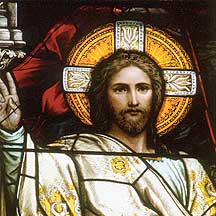
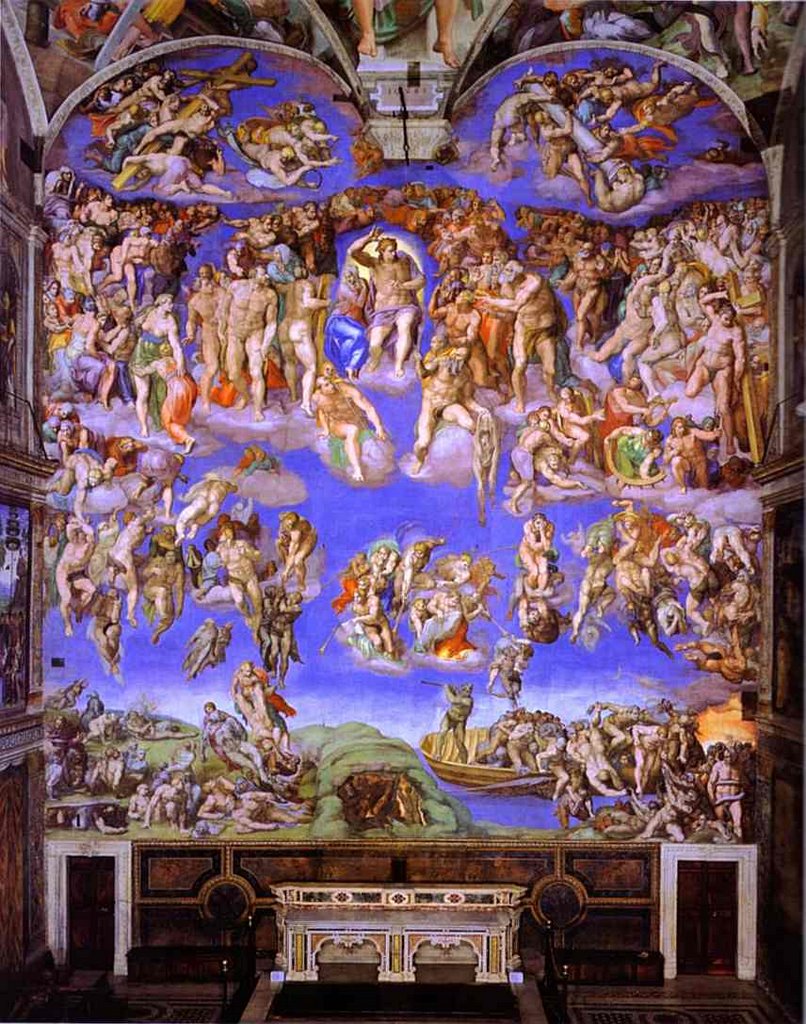


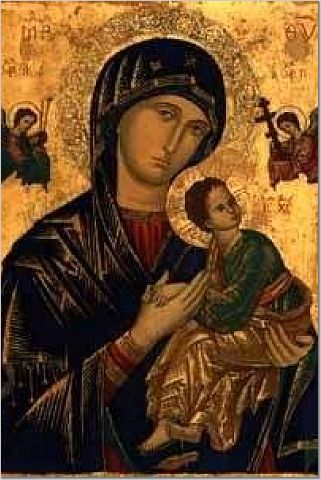



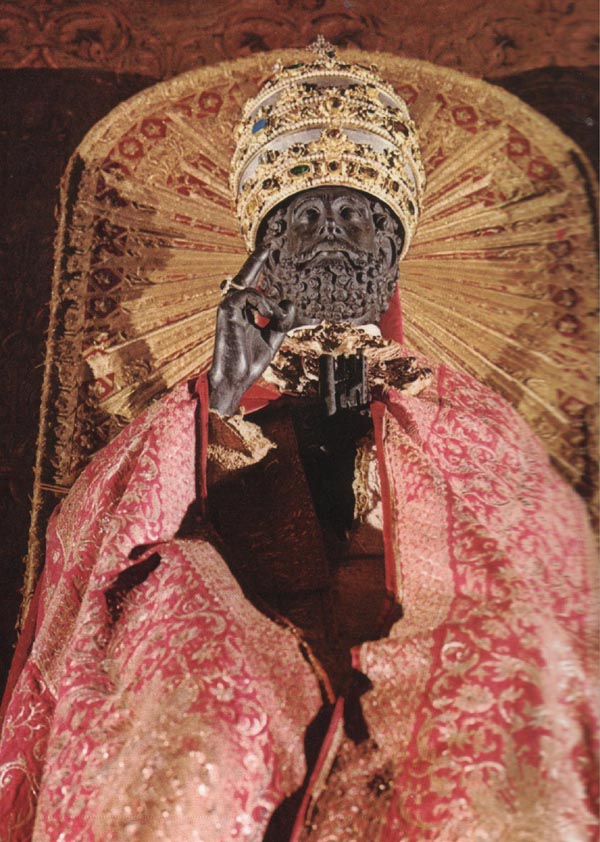
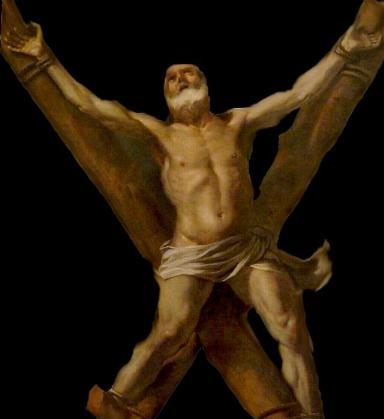




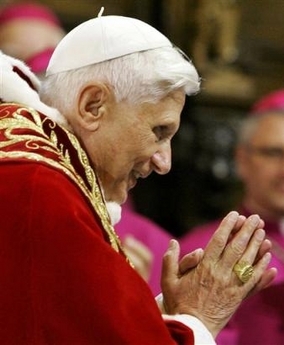






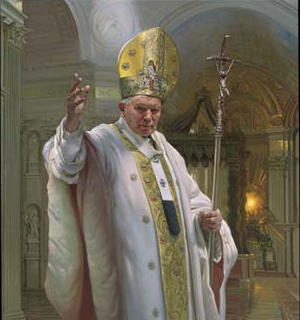









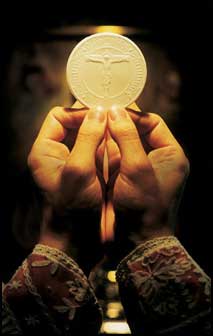
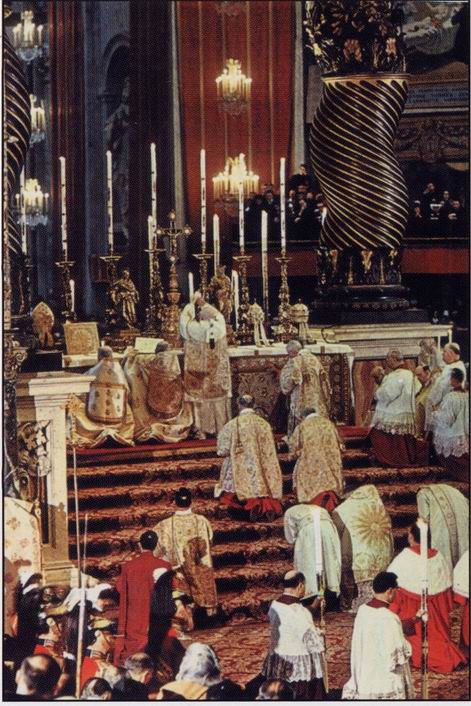



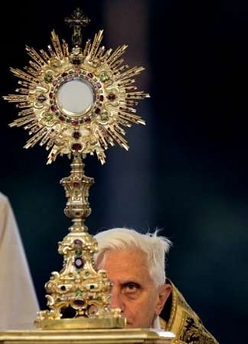







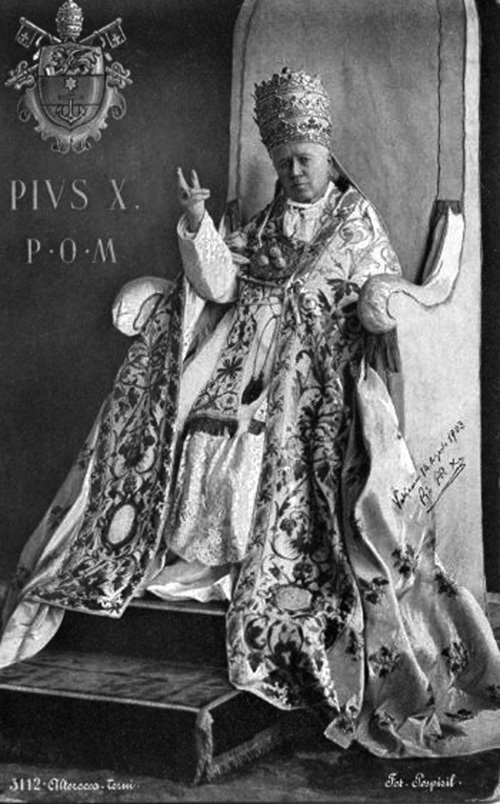










2 comments:
Yay. The Improperia in Latin. And Miserere as well. We had ours chanted in English.
You pose an interesting conundrum re. many crucifixes out of pastoral necessity v. just one. In our parish in Brunei we had just one crucifix to cater to what must have been thousands of worshippers. The church was full, four marquis were set up outside filled with seats and TV screens 'broadcasting' the service, and the parish centre was jam packed as well. All just used on crucifix, and the veneration of the cross took a VERY long time. To shorten the duration the congregation were invited to just make a simple or double genuflection rather than kiss the corpus/cross. Still, Faithful Cross, Improperia, Psalm 22, Sing my tongue the glorious battle, two praise and worship songs (one of which was a jazzed up version of the miserere - ugh!) were sung in full. We of course, lose out on actually kissing the cross which never ceases to bring tears to my eyes, but on the plus side, multiple crosses are not used.
I wonder if there's a compromise to this. In Westminster Cathedral, the faithful are encouraged to make a public veneration during the service while the clergy and choir make their individual act of veneration. After the Improperia, and Crux Fidelis, the congregation kneel together and sing When I survey the wondrous cross as their act of corporate veneration. It is only after the service that the crucifix is brought to the nave and a queue, sometimes 2 hours long forms to venerate the cross. The Lamentations of Jeremiah is sung. To me this seems, not perfect, but the most appropriate response to the vast crowds (for which we should be very thankful).
P.S. I like your candlesticks. We have pretty shabby, IKEA looking ones. Heh. When I get my paycheck I want to donate to our church beautiful ones like in your church.
Hello londoncatholic and thanks for visiting and leaving me a comment. Great to know that there are so many traditional minded Catholics in the vicinity =)
Regarding the veneration of the Holy Cross on Good Friday, the rubrics anticipate personal adoration for a manageable number of faithful and communal adoration when the numbers are too great. Personally, I can't foresee communal adoration being legitimately carried out in the Malaysia- Singapore-Brunei region except in St. Peter's in Malacca as I don't think the numbers are that great to begin with. I'm thinking St. Peter's (Rome) when I mean great numbers =)
Pastorally, I do not want to deprive the faithful of their personal moment of encounter with the crucified Lord and therefore, a larger number of crosses should be allowed as a pastoral consession. But not in the numbers that my parish practices. 11 is ridiculous. In a parish like mine, 4 at the most, should be sufficient. Most people come this day for the veneration anyway, so waiting a while won't kill them.
The Westminster solution, which I read at Msgr. Langham's blog, is suitable but not here as many Churches here have another service after that, so there just wouldn't be enough time. But if there is only one service, that it would be ideal, in preserving the meaning of the sign of the single cross.
Kissing the cross is a very powerful sign and a moving expression of our love for the Lord who died for us. I would be very loath to omit it. Sometimes, pastoral situations are quite tough. But these need to be distinguished from mere convenience which is what pastoral necessity really means to many people.
The Improperia, Lamentations and Miserere in Latin were requested by our parish priest, Fr. Marshall as it is the prescribed music for the veneration of the cross. Still, it was pretty cool though =)
Jazzing up the Miserere would be like chanting Aqua's Barbie Girl. Totally missing the point! Horror of horrors!
The candlesticks are very old. Pre V2. Luckily they were not thrown out in those years. It would probably cost many thousands to get some like these, but not as ornate. I checked =)
Good luck and do drop by again!!
Post a Comment